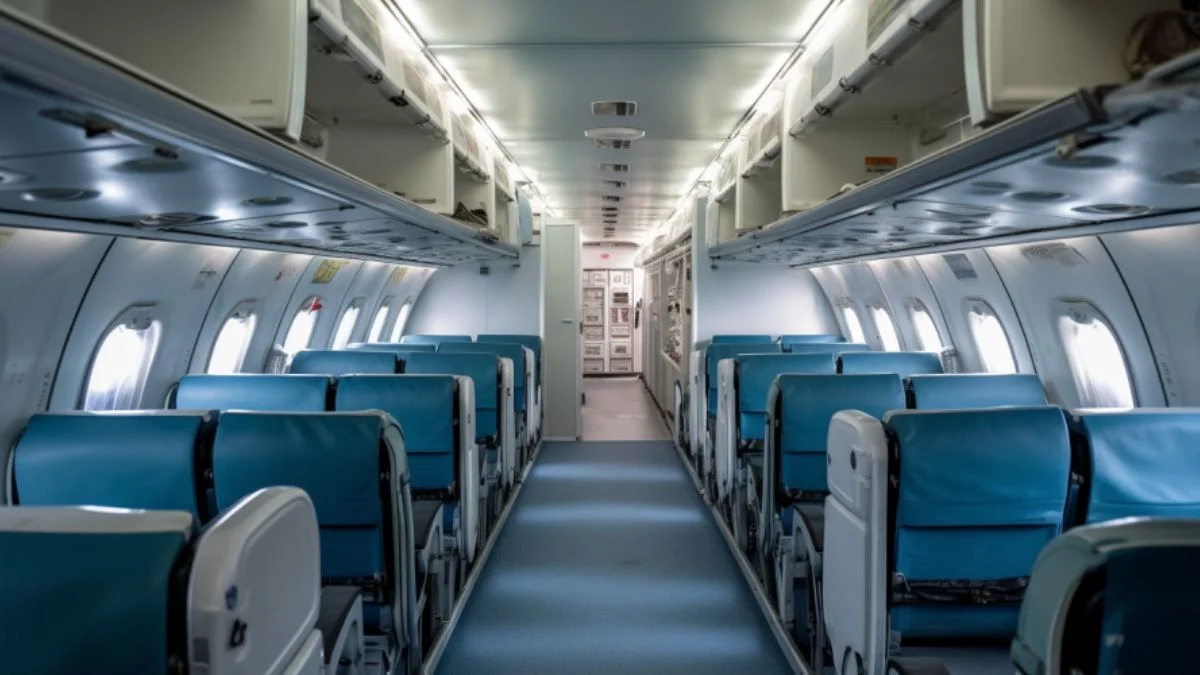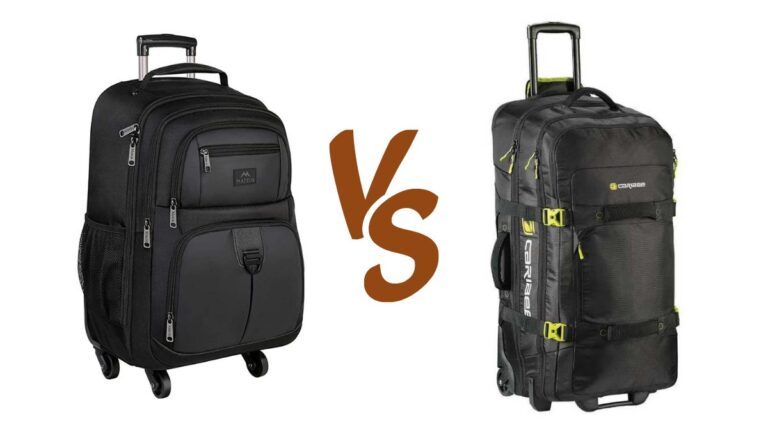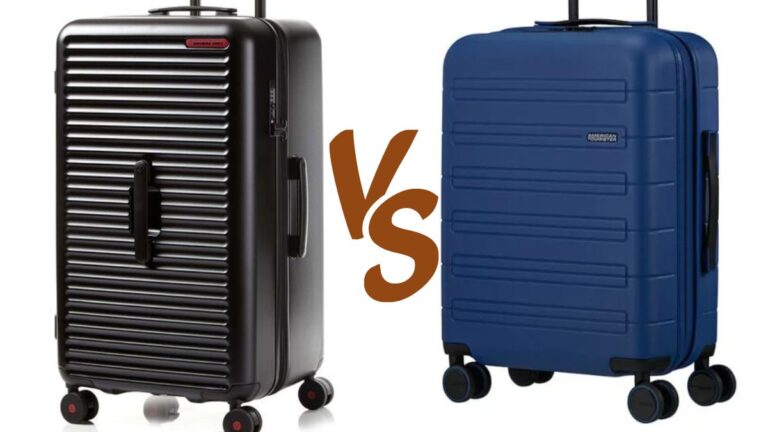Are Luggage Compartments on Planes Pressurized and Heated? Unraveling the Facts

As participants in Amazon Associates and other programs, we earn from qualifying purchases. This comes at no additional cost to you. For more details, see our Affiliate Disclosure.
The world of aviation is filled with an array of intriguing aspects that passengers seldom consider as they buckle up for their journey. One such element, often overlooked yet pivotal to our comfort and safety, is the status of the aircraft’s luggage compartment. Is it pressurized? Is it heated?
For many travelers, these questions may seem trivial, but understanding the behind-the-scenes mechanics of our flying vessels is enlightening and can dispel some common misconceptions. In this article, we’ll delve into the specifics of airplane luggage compartments, demystifying the facts and debunking the myths to provide a comprehensive understanding of these hidden havens of our personal belongings.
The Science of Cabin Pressurization
The concept of cabin pressurization is crucial to the field of aviation. As an aircraft ascends, the outside air pressure decreases rapidly, leading to a less oxygen-rich environment. If no countermeasures are taken, this could lead to hypoxia, a condition where not enough oxygen makes it to the cells and tissues in the body, potentially causing severe health problems for the passengers and crew.
To prevent this, airplanes are designed with a pressurization system. This system works by pumping compressed air, typically bled off from the engines or an auxiliary power unit, into the cabin to artificially increase the internal pressure. The pressurized cabin air is then carefully regulated to simulate a lower altitude, typically equivalent to an altitude of 5,000 to 8,000 feet, where the human body feels comfortable and can function normally.
Pressurization also ensures that the structural integrity of the aircraft is maintained at high altitudes. The fuselage, or the aircraft’s body, is subject to tremendous stress due to the difference between the internal and external pressures. The aircraft is designed in a way that the internal pressure, while lower than at sea level, is still significantly higher than the external atmospheric pressure at cruising altitude. This ensures that the aircraft’s structure can withstand the forces exerted on it during flight.
This concept of cabin pressurization is not only applicable to the area where passengers and crew are seated, but also extends to other parts of the aircraft, including the luggage compartments. However, the specifics of how this is achieved in these compartments and why it matters can be a little more complex, as we will explore in the following sections.
Pressurization in Luggage Compartments: Dispelling the Myths
Contrary to some popular misconceptions, the luggage compartments in most commercial aircraft are indeed pressurized. This is crucial not only for the safety of any pets that might be traveling in these compartments, but also for the structural integrity of the airplane itself.
Airplanes are essentially cylindrical tubes, and pressurizing only one part of the tube (the passenger cabin) while leaving another part unpressurized (the luggage compartment) could lead to structural issues. The difference in pressure between the two compartments would impose substantial stress on the floor separating them, which could compromise the safety of the aircraft.
Therefore, in most commercial aircraft, the luggage compartment shares the same pressurization as the passenger cabin. This means that whether you’re seated comfortably in the cabin or you’re a pet in a carrier below, you’re experiencing approximately the same atmospheric pressure.
However, it’s important to note that while pressurization is standard, temperature control in these compartments can vary significantly depending on the aircraft model and airline policies, which we will delve into in the next section.
Temperature Management Onboard: A Closer Look
Temperature management on an airplane involves a complex system that works to ensure the comfort of passengers and crew, as well as the safety of items and pets in the luggage compartment.
In the passenger cabin, temperature regulation is a careful balancing act. The aircraft’s air conditioning system, which typically uses air bled off from the engines, cools the cabin air. This air is mixed with recirculated cabin air that’s passed through HEPA filters to remove bacteria and viruses. The overall goal is to maintain a comfortable temperature that suits the majority of passengers, typically around 22-24°C (71.6-75.2°F).
In the luggage compartment, the situation is a bit more complex. Not all aircraft have heated cargo holds. On some planes, the luggage compartment is indirectly heated by the passenger cabin above it and by hot air bled from the engines. This is typically enough to keep the compartment above freezing at cruising altitudes. However, on other planes, particularly those used for long-haul flights or for carrying live animals, the cargo holds may be directly heated and their temperature carefully controlled.
It’s important to note that not all cargo holds are the same. While some are temperature-controlled, others may not be. This is why airlines often have strict rules regarding what can be transported in the cargo hold, particularly when it comes to live animals or temperature-sensitive items.
In the next section, we’ll discuss in more detail the heating system in luggage compartments and the common misconceptions surrounding it.
The Heating System in Luggage Compartments: Facts and Misconceptions
It’s a common misconception that all luggage compartments in airplanes are cold and unheated. In reality, the heating conditions of these compartments can differ significantly based on the design of the specific aircraft and the operational policies of the airline.
In the majority of modern commercial airplanes, the luggage or cargo compartments are located beneath the passenger cabin, in the belly of the aircraft. These compartments usually share the same air supply as the cabin above, meaning they are both pressurized and heated.
The heating in these compartments typically comes from two sources. First, residual heat from the passenger cabin above can help warm the space below. Second, most airplanes use a portion of the hot air from the engines, referred to as ‘bleed air’, to heat and pressurize the cabin and cargo compartments. This air is cooled and conditioned before being circulated in the aircraft, maintaining a temperature that usually keeps the luggage compartments above freezing even at high altitudes.
However, it’s important to note that while these compartments are generally heated, they are not typically as warm as the passenger cabin. They are designed to prevent freezing temperatures, but not necessarily to maintain a comfortable temperature for live animals. This is why some airlines have specific aircraft with temperature-controlled cargo holds for transporting pets, while others may restrict pet travel during certain times of the year or on specific routes.
Why Pressurization and Heating Matter for Our Luggage
The pressurization and heating of airplane luggage compartments play a crucial role not just for the aircraft’s structural integrity, but also for the safe and undamaged transportation of our luggage and other cargo.
Firstly, pressurization is vital for any items that could be affected by low air pressure. For instance, certain goods such as electronics, food products, and musical instruments could be damaged if exposed to the low pressure conditions that exist at the high altitudes where planes typically cruise.
Secondly, heating is essential to prevent damage from freezing temperatures. This is particularly important for luggage containing items like liquids, cosmetics, certain types of batteries, and other sensitive materials that could be damaged, or even become dangerous, if frozen and then rapidly thawed.
Moreover, heating and pressurization in the cargo hold are critically important when transporting live animals. Exposure to low pressure and freezing temperatures can be fatal for pets. Consequently, most airlines have strict policies for pet transportation, and many use specific aircraft that have temperature-controlled and pressurized cargo holds suitable for carrying animals safely.
Lastly, pressurization and heating are also important for the safe transportation of certain types of freight. Many airlines operate cargo services alongside their passenger operations, and these may carry a wide range of goods including perishable food items, pharmaceuticals, and other temperature or pressure-sensitive products.
Potential Risks of Unpressurized or Unheated Compartments
Unpressurized or unheated compartments in an airplane can present a number of potential risks, both to the structural integrity of the aircraft and to the items or live animals being transported in these compartments.
- Structural Risks: As previously explained, a large difference in pressure between the passenger cabin and the luggage compartment could impose substantial stress on the floor separating them. This could potentially lead to structural failure, compromising the safety of the aircraft. Therefore, maintaining a consistent pressure throughout the aircraft is crucial.
- Risks to Luggage: Certain items within luggage may be sensitive to changes in pressure or temperature. Electronics, certain types of batteries, and pressurized containers can be affected by low pressure. On the other hand, freezing temperatures can cause liquids to expand and potentially rupture their containers, damaging other items in the luggage. Fragile items, such as musical instruments, could also be affected by extreme cold.
- Risks to Live Animals: Pets or other live animals being transported in the luggage compartment could be at risk if the compartment is unpressurized or unheated. Low pressure can cause discomfort or health issues, while freezing temperatures can be fatal.
- Risks to Cargo: Airplanes often carry cargo as well as passenger luggage. This cargo can include a wide range of items, such as perishable food, temperature-sensitive pharmaceuticals, and other goods that could be damaged by changes in pressure or temperature.
While modern commercial airplanes typically have pressurized and heated luggage compartments, understanding the potential risks associated with unpressurized or unheated compartments underscores the importance of these features for the safety and comfort of both passengers and cargo.






